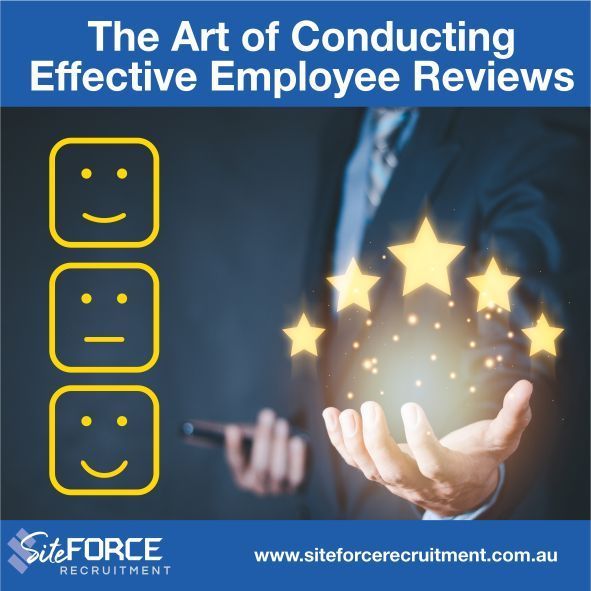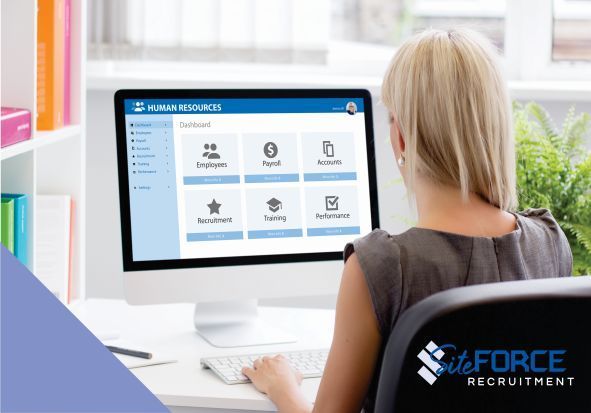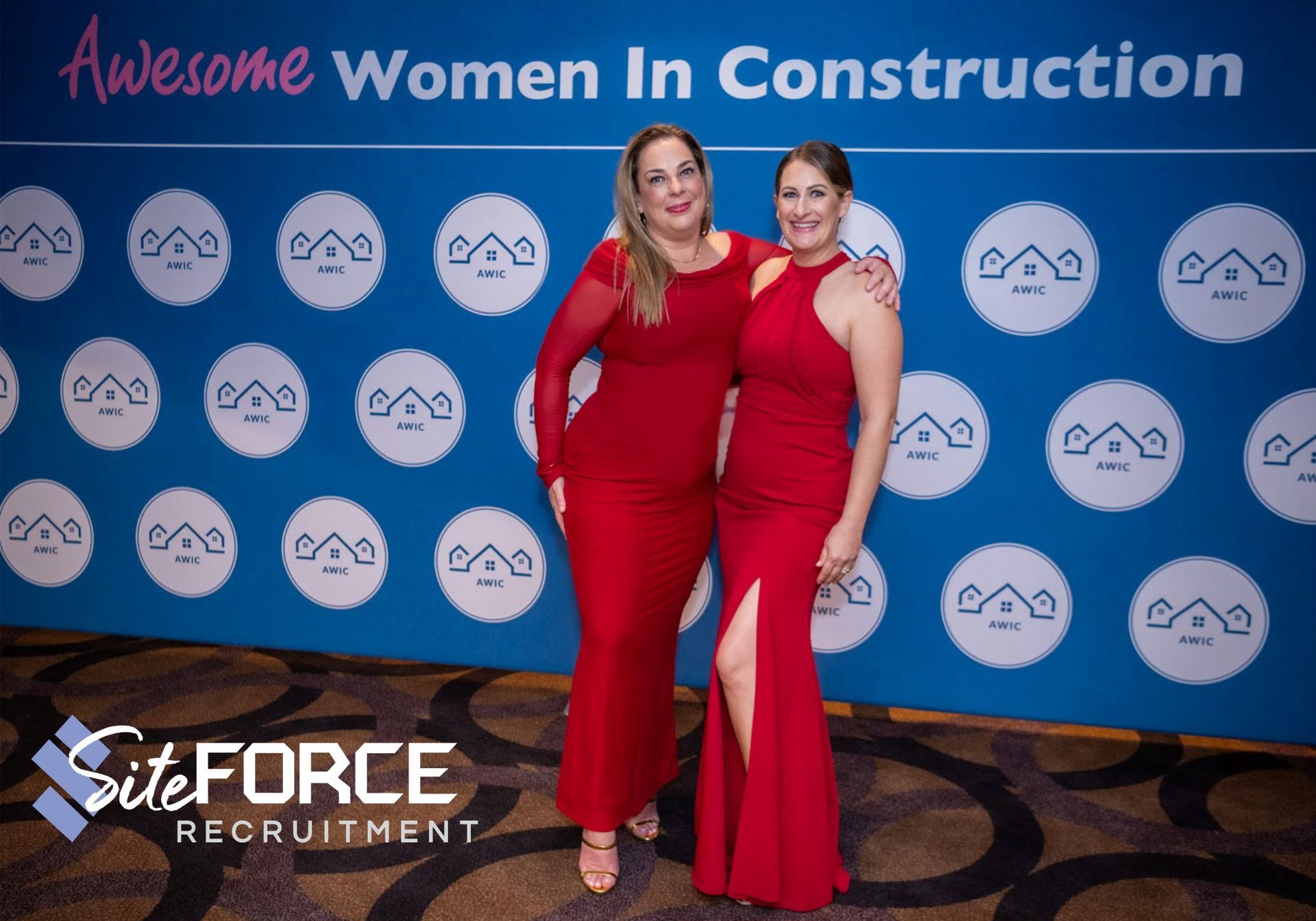The Art of Conducting Effective Employee Reviews
Constructing a Constructive Conversation

Picture this: me, a seasoned professional, sitting across the table, iPad in hand, ready to dispense wisdom like a Construction CEO overseeing a bustling worksite. I’ve given so many reviews that if I had a dollar for each, I might just build my own construction empire on the side. But, oh boy, I don’t forget the days when I was an eager as hell, a fresh face in the industry, receiving reviews that felt like a mix between a Shakespearean tragedy and a stand-up comedy routine.
In those early days, I learned that feedback is like concrete – it sets fast, and well done it makes for a solid foundation, but done shoddily, leaves you crumbling. But hey, there were moments of brilliance too, those golden nuggets of positive feedback that made me feel like a queen and even years later, are still memorable.
In the ever-evolving landscape of the construction industry, where culture is paramount, conducting effective employee reviews is a crucial aspect of nurturing a positive, motivated, and productive workforce. Ethical Systems Organisations states “Employee’s identities are entangled with their jobs”, so a well-executed review not only provides constructive feedback but also plays a pivotal role in shaping an employee’s satisfaction, direction and fulfilment in addition to the company's culture.
So let’s talk psychology, the science behind the delicate art of reviews, firstly in how you find yourself when delivering reviews, and also how to structure the content of the reviews, so it promotes and advances both the employee and the company.
The delivery:
Preparing yourself mentally and emotionally for giving an employee review requires a delicate balance of empathy, objectivity, and clear communication. Begin by reflecting on the employee's achievements and areas for improvement, focusing on specific examples to provide constructive feedback. Approach the review with an open mind, acknowledging that each person has unique strengths and challenges. Cultivate a mindset of support and growth, viewing the review as a collaborative opportunity for professional development rather than a critique. Take a moment to centre yourself, ensuring you're in a calm and focused state to deliver feedback with clarity and sincerity. Remember that constructive criticism, when delivered with empathy, can be a catalyst for positive change, contributing to both individual and team growth.
It is also crucial to understand ‘negative bias”, and ensure we are in a good space ourselves when giving reviews. Negativity bias refers to our proclivity to “attend to, learn from, and use negative information far more than positive information”. In a world of negative news, budget pressures, closing timelines, economic pressures, we can find the world where “negative events elicit more rapid and more prominent responses than non-negative events. Let me tell you, maintaining the balance can be trickier than keeping a tower of Jenga blocks steady during an earthquake until you embrace the science.
The science: positivity-to-negativity ratio:
There are many mathematical theories for the right positivity-to-negativity ratio behind employee reviews. To flourish, it is around a 4:1 ratio of positive feedback to each negative feedback, outside of which employees can fail to flourish. The positivity ratio plots as a U curve showing that a higher positivity ratio is healthy and productive up to a certain point then declines. So, it is crucial that we apply a balanced ratio between positive and negative comments to conduct impactful employee reviews and to do is sincerely if we want it to be one that progresses the employee, and the company to foster a happy and productive workplace. It’s like trying to mix concrete – too much water (read: negativity) and it becomes a sloppy mess. Too little water (read: positivity) and it’s as stiff as my expression during a ’Dad’ joke. It’s a fine line, and I’ve walked the line so many times I believe I have the right formula these days.
10 Tips for Effective Employee Reviews
1. Establish Clear Objectives:
Before initiating the review process, it's essential to define clear objectives. Ideally you would have a procedure developed on what areas to cover and what are the key performance indicators for your organisation? Clearly communicated expectations provide a framework for constructive discussions.
2. Create Support and Buy In:
Foster an atmosphere of open communication and trust. Employee members should feel comfortable sharing their thoughts and concerns. Emphasise that the review is a collaborative effort to support professional growth rather than a punitive exercise. Share the company's vision and demonstrate how each employee member contributes to its realisation. The review is also an opportunity to gain buy-in from your employee about what you are trying to achieve. A Gallup review revealed “half of your employees are looking to leave – that’s one of two key findings from our 2023 State of Global Workplace report”. A sense of purpose and alignment with overarching goals enhances motivation and job satisfaction. Read more in my blog “5 Dynamic Steps to Keep Your Construction Team Engaged” that talks on building trust, loyalty, and an ‘un-poachable’ team that is invested in the success of the company.
3. Frequency Matters:
Regular reviews, rather than an annual event, contribute to ongoing performance improvement. Consider quarterly, biannual, or project end reviews where you work on short project timelines to maintain a consistent feedback loop and address issues in a timely manner. Recognise contributions to specific projects. Highlight employee work, problem-solving skills, and successful project completion. This approach ties feedback to tangible achievements and fosters a sense of pride.
4. The Positivity Ratio:
Besides what is mentioned above, also work out the right positivity-to-negativity ratio that fits with the personality of the employee. You all know that one employee that is fact based and if you give them too much positivity, you lose credibility. It must be a well thought out approach that is customised to the employee. Be adaptable and don’t use the same fixed formula with everyone. One client shared recently with me that they use a ‘shit sandwich’ formula, making sure they start with the first layer of positivity, put the negative part in the middle, and end on a positive note, that is very successful for them.
5. Take time to align goals and opportunities
Employee reviews offer a valuable platform to align individual aspirations with organisational goals, creating a roadmap for mutual success. During this process, it's essential to identify and understand the employee's personal and professional goals. By exploring their ambitions, strengths, and areas for growth, the review becomes a collaborative effort to establish goals that synchronise with the broader vision of the company. Equally important is outlining clear steps for the employee to achieve these goals, ensuring they have a tangible pathway for success. Involve employee members in the goal-setting process. Collaboratively establish SMART (Specific, Measurable, Achievable, Relevant, Time-bound) goals that align with both individual aspirations and organisational objectives. This involves not only delineating the specific actions and skill development required from the employee but also highlighting how the company can provide support. Whether through training programs, mentorship opportunities, or resource allocation, the review becomes a strategic dialogue, fostering a sense of partnership and mutual investment in both individual and organisational advancement.
6. Fuel Motivation:
You’re busy, but if you’re a leader, you’re paid to notice things. Addressing issues promptly prevents them from escalating and allows for real-time adjustments. Specific feedback provides clarity, enabling employee members to understand the areas that require attention. A lot of leaders focus on corrections in real-time adjustments, but remembering to highlight the effort invested by employees, especially in the demanding field of construction, creates a sense of appreciation. Recognise dedication, hard work, and resilience to instil a positive work ethic. Positive feedback acts as a motivational force, reinforcing desired behaviours and boosting morale. Acknowledge and celebrate achievements, whether big or small, to inspire continued excellence. Remember to do this at review time, but also recognise effort as it happens. If someone really puts in a stellar effort, reward them with a “you smashed it today” will fuel motivation.
7. The Art of Constructive Criticism:
Constructive criticism is an invaluable tool for growth when delivered effectively. Much like crafting a delicate structure, it involves focusing on specific behaviours rather than personal attributes, and provide actionable steps for improvement. The aim is not to dismantle, but rather to fortify. By focusing on the steps, the constructive critique becomes a blueprint for professional growth. It's crucial to strike a balance between providing honest feedback and maintaining a positive, encouraging tone. Comparisons to the construction process abound – just as a skilled craftsman refines their technique over time, employees can refine their skills with targeted guidance. The goal is to shape the individual, much like moulding a piece of raw material into a finished product, fostering a culture of continuous improvement and creating a workforce that is resilient, adaptable, and continually evolving.
8. The Growth Mindset Approach:
Psychologist Carol Dweck is known for her work on motivation and mindset, states the concept of a’ growth mindset’ emphasises viewing challenges as opportunities for growth. Incorporate this mindset into feedback, encouraging a belief in continuous improvement and learning. “Mindset change is not about picking up a few pointers here and there. It's about seeing things in a new way. When people change to a growth mindset, they change from a judge-and-be-judged framework to a learn-and-help-learn framework. Their commitment is to growth, and growth take plenty of time, effort, and mutual support.”
9. Highlighting Safety Practices:
In the construction industry, safety is paramount. Integrate a safety performance review component to acknowledge adherence to safety protocols and contribute to a secure work environment.
10. Feedback Loops and Follow-Up:
Employee reviews should be a two-way street. Encourage employee members to share their perspectives on their performance, challenges faced, and areas where they see potential for improvement. Leaders should also be open to receiving feedback. Creating an environment where constructive criticism flows both ways fosters mutual respect and strengthens the employee dynamic. Establish a system for following up on feedback. Periodically revisit goals, assess progress, and adjust strategies as needed. This iterative process ensures continuous improvement.
Caution:
Let's talk about when an employee gets a bit too comfy in the positive feedback zone. It's like they've built a cozy house on the sunny side of the street and are hesitant to step into the shade. Dependence on constant praise can be like relying on one tool in a toolbox – it works, but you need the whole set for a sturdy job. As someone who's been in the reviewer's shoes, finding the right balance becomes a juggling act. It's crucial to gently nudge the team toward a mindset that embraces challenges and setbacks, turning them into stepping stones for growth. After all, just like a construction project, a few bumps in the road lead to a stronger foundation.
Conclusion:
In the construction industry, where each project is a testament to employee work, effective employee reviews are the building blocks of success. Striking the right balance between positive and constructive feedback, grounded in psychological principles, creates a workplace culture that promotes happiness, productivity, and sustained growth. By implementing these strategies, construction companies can construct not only sturdy structures but also resilient and motivated employees ready to tackle any challenge that comes their way.
I’d love to hear back from you on what you have found to be successful for your company. Get in touch!
Our Superpower
Our leading 'superpower' is attracting and retaining quality team members who share our values of honesty, integrity, diligence, and service, allowing us to deploy quality team members on client sites quickly.
Our team member's superpower is being motivated, prepared and ready to enthusiastically contribute to the projects at hand, more than just a pair of hands.
Related articles:
Read other informative articles for both employers and workers at: https://www.siteforcerecruitment.com.au/blogs
Chantal Penny is the Director with Superpowers of SiteForce Recruitment. A thought leader in the industry, Chantal, based on her expertise and industry perspective, offers unique guidance, inspiration, and influence in the industry. Chantal Penny is also a thought leader in the industry with her Podcast, Talent Instinct, which is available at:
https://talentinstinctpodcast.libsyn.com/site
At SiteForce Recruitment, we specialise in labour-hire and permanent recruitment in the construction industry. We are committed to valuing people, safety and wellbeing, collaboration, trust and, of course – results!
CONNECT with us via our contact page or bookings links on our website if you are looking to recruit for, get your dream job, or join our amazing labour force team.











